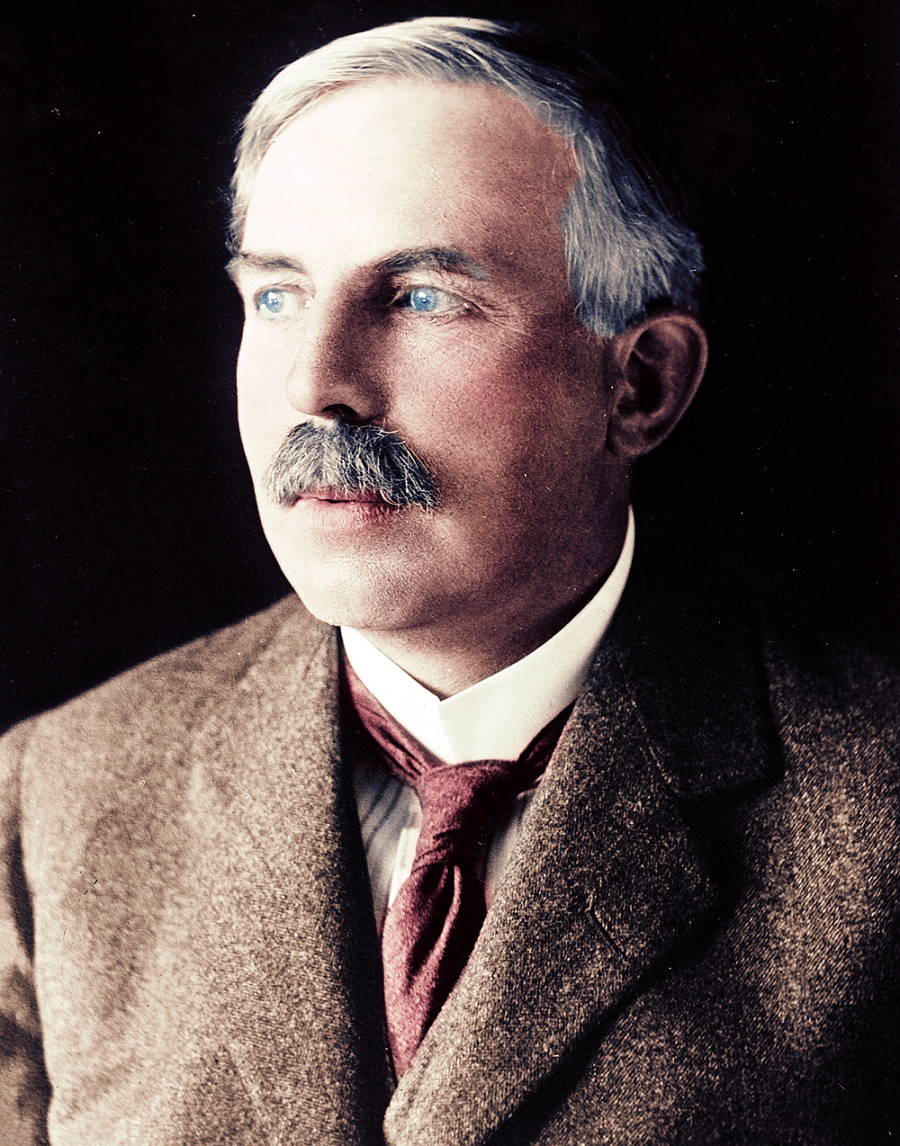In the cosmic dance of scientific enlightenment, few figures stand as luminously as Ernest Rutherford, a beacon of insight in the realm of experimental physics. Born on August 30, 1871, in Brightwater, New Zealand, Rutherford’s trajectory through the celestial spheres of knowledge was destined to leave an indelible mark upon the annals of human understanding.
From his humble beginnings in the Antipodes, Rutherford’s journey towards scientific eminence began with a thirst for knowledge that knew no bounds. His voracious appetite for discovery led him from the tranquil shores of New Zealand to the hallowed halls of academia in England, where he pursued his studies with unwavering determination and scholarly zeal.
Rutherford’s ascent to scientific prominence was swift and resolute, propelled by a series of groundbreaking discoveries that revolutionized our understanding of the atom and its constituent particles. Among his most seminal contributions was the elucidation of the concept of radioactive decay, wherein he unveiled the fundamental laws governing the spontaneous disintegration of atomic nuclei—a revelation that laid the groundwork for the field of nuclear physics.
In addition to his pioneering work on radioactivity, Rutherford’s name became synonymous with the identification and characterization of the three types of radiation: alpha, beta, and gamma rays. Through meticulous experimentation and empirical observation, he unveiled the distinctive properties of each form of radiation, thereby expanding the frontiers of human knowledge and understanding.
Yet perhaps Rutherford’s most enduring legacy lies in his bold postulation of the nuclear model of the atom—a revolutionary hypothesis that forever altered our perception of the atomic realm. Through ingenious experiments conducted within the confines of his laboratory, Rutherford revealed that the atom harbored a dense, positively charged nucleus at its core, orbited by a cloud of negatively charged electrons—a paradigm-shifting insight that reshaped the landscape of atomic physics.
Rutherford’s profound influence extended far beyond the confines of the laboratory, permeating every facet of human existence. His visionary insights and groundbreaking discoveries paved the way for a myriad of technological advancements, from the development of nuclear energy to the field of medical imaging—a testament to the transformative power of scientific inquiry.
Moreover, Rutherford’s legacy endures in the countless minds he inspired and the generations of scientists he mentored. His unwavering commitment to the pursuit of truth and his boundless curiosity serve as guiding beacons for all who seek to unravel the mysteries of the cosmos.
As we gaze upon the celestial expanse of human achievement, let us not forget the towering figure of Ernest Rutherford—a titan of scientific inquiry whose contributions continue to illuminate the path of human progress.
